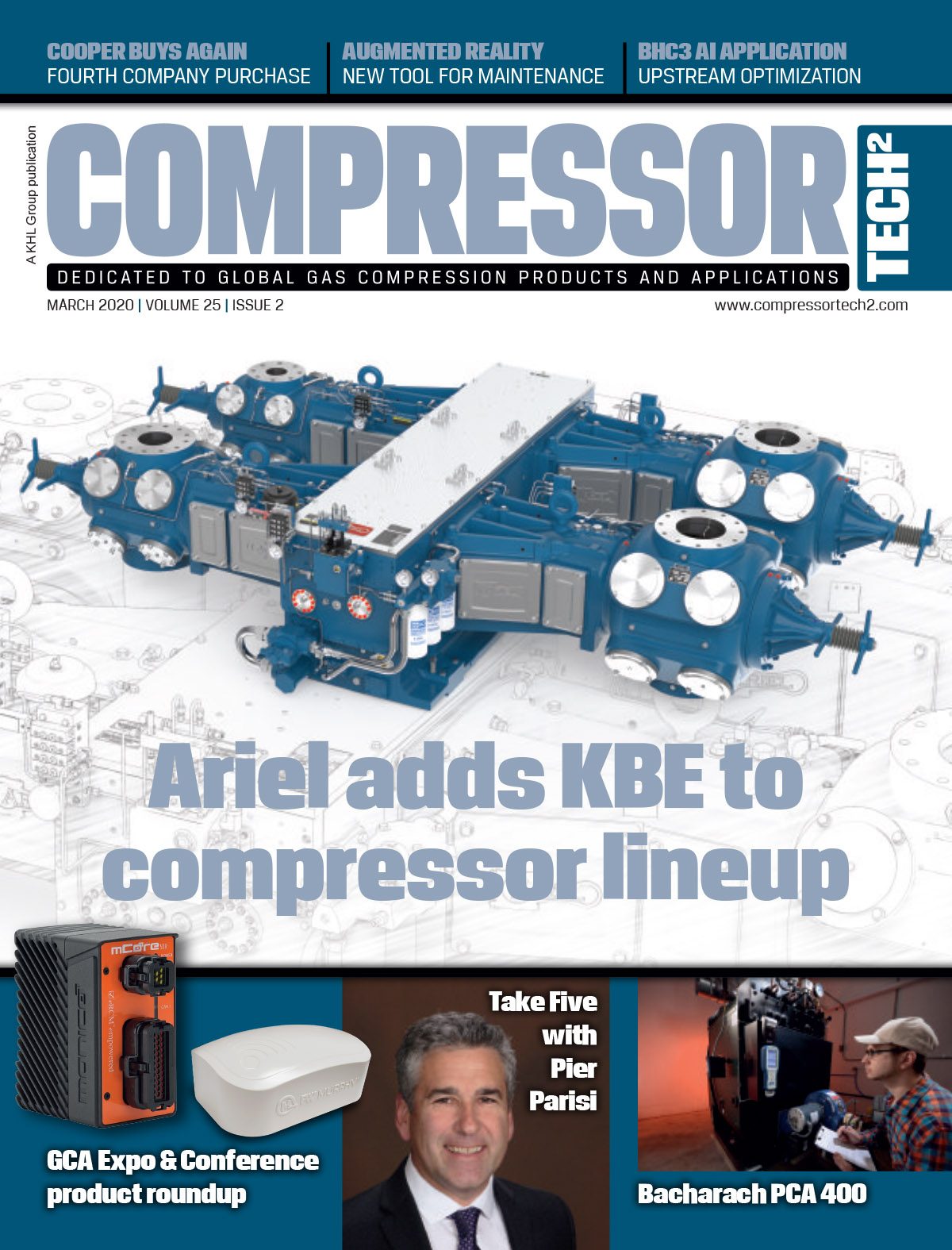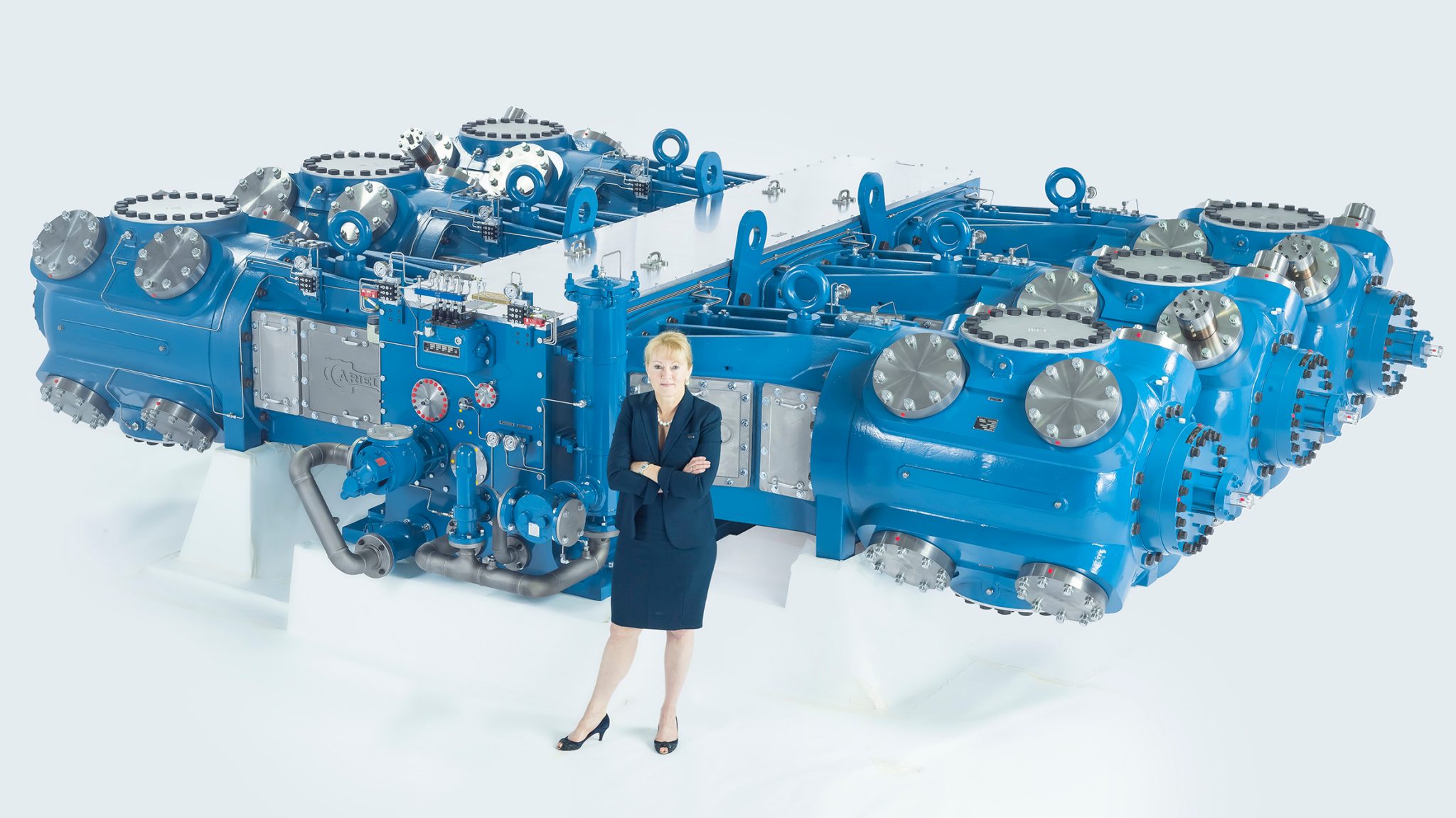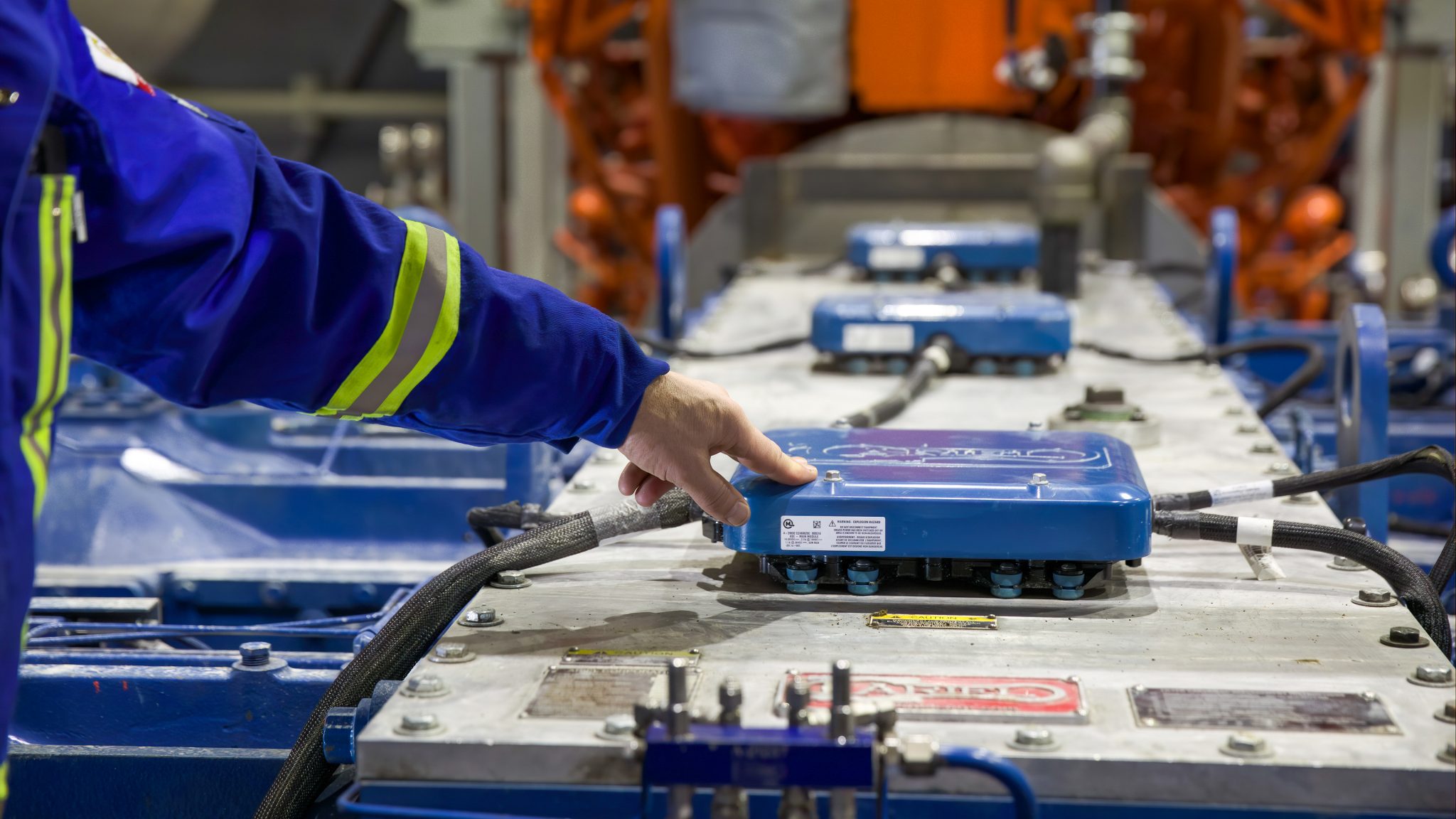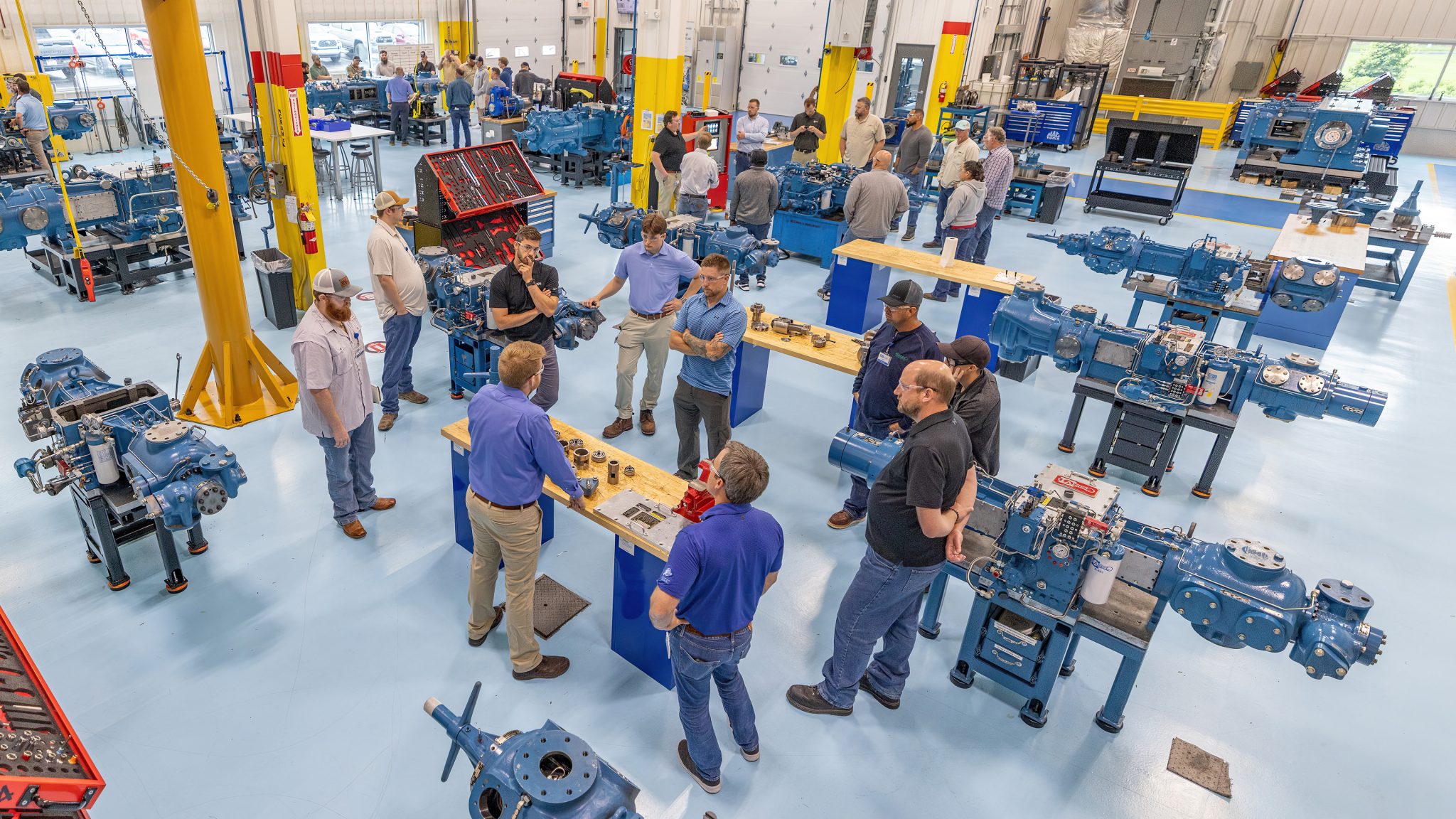Ariel Adds New Compressor to KB Lineup
 COMPRESSORTECH2 Introduces the Ariel KBE to its Readers
COMPRESSORTECH2 Introduces the Ariel KBE to its Readers
KBE model designated for gas gathering, lease fleet applications.
By DJ Slater
The following product profile was taken from the March 2020 issue of CompressorTech2 and published with their permission.
A trend appears to be rising out of Mount Vernon, Ohio, in the form of new compressor models on a more frequent basis. Nearly two years after releasing two new compressor frames, Ariel Corp. has done it again with another model - the KBE.
The latest compressor adds another KB frame to Ariel's midline compressors - the heart of the company's lineup. In 2018, Ariel debuted the KBK:T frames, which also fall into the midline range. Unlike the KBK:T frames, which fell between two compressor models in the lineup, the KBE serves as an alternative for operators using Ariel's JGH:E:T compressors with ET cylinders.
"We've made a significant investment in compressor technology and will leverage that to bring new products to the marketplace," said Robert Drews, Ariel's director of marketing. "We are improving the value we provide to our customers."
Similar Features
The KBE, available in two- and four-throw variations, is designed to meet the compression needs for many of the applications that use its JGH:E:K:T frames. It has the same features of other KB models, such as the KB style angled guide, which increases the structural stiffness substantially compared with the JG style frames, Drews said.
Like the JGT's two- and four-throw variations, the KBE boasts the same horsepower and rod load, but with a 5 in. (127 mm) stroke; the JGE, JGH, and JGT all have a 4.5 in. (114.3 mm) stroke. The added stroke allows the KBE to fully load 1200 and 1400 rpm engines and improves operational flexibility.
The KBE frame is rated for 1300 to 2600 bhp (969 to 1939 kW) at 1400 rpm and a 1167 fpm (5.92 m/s) piston speed. It has a 74,000 lbs. (329,168 N) total rod load; 37,000 lbs. (164,584 N) tension rod load; and 40,000 lbs. (177,929 N) compression rod load.
The KB Family
As part of the KB compressor family, the KBE incorporates redesigned and stronger piston and rod assemblies and connecting rods. Like the KBK:T, the crossheads, connecting rods, and bearings are backward compatible with legacy JGE:K:T products.
"We hold ourselves accountable for supporting the equipment out in the field," Drews said. "We also strive to address any hurdles that could be encountered with our customers when introducing a new product. "We feel that having backward compatibility helps demonstrate our interest in supporting our customers' existing equipment and our confidence in the product we are introducing," he said. "It minimizes the impact on a company's inventory to adopt a new product because you can share components across both new and existing compressors."
The KBE frame, which can accommodate an internal torsional vibration damper, has the same crankcase footprint as the KBK:T compressors and features a simplified auxiliary end that incorporates the frame oil thermostat into the oil filter header.
In terms of maintenance, Ariel designed the KBE for simplified access. The 0-ring seals on the top cover and guide covers reduce the number of fasteners and eliminates the common challenges with paper gaskets.
New E Cylinders
Another highlight of the KBE frame comes from its cylinders. The KBE uses Ariel's new E cylinders, a derivative of its common ET cylinders found in most of its compressor models. The E cylinders offer an extended service life through the use of the CP and CPs valves found in the majority of Ariel cylinders.
"The KBE combines our latest design features with enhanced operational capabilities, along with the extensive field experience and cost-effectiveness of our ET cylinders," said Joe Fernandez, Ariel's manager of Application Engineering. ''This product will be primarily focused in the 1000 to 1500 horsepower range, particularly popular for lease fleets. The longer stroke of the KBE matches well with 1200 and 1400 rpm engines, and also 1200 rpm electric motors," he said.
A Future of KB Frames
The KBE is another step in Ariel's long-range plans to incorporate the KB technology and its benefits across the compressor product line. The KB style frame first debuted in 2002 with the KBU and KBZ frames, designed for high-horsepower and high-compression capacity applications with horsepower ratings up to 7800 bhp (5816 kW). The KBB and KBV frames followed four years later for pipeline transmission and high-pressure injection applications and are rated up to 10,000 bhp (7457 kW). The gas compression world would not see another new KB frame until 2018 when Ariel debuted the KBK:T frames at the Gas Compressor Association (GCA) Expo and Conference in Galveston. Texas. Those frames featured a horsepower range from 1840 to 5520 bhp (1372 to 4116 kW) (see COMPRESSORTECH2, May 2018, p. 15).
"When we rolled out the KBK:T, that was a lengthy development program for us," Drews said. "We conducted a significant amount of testing on the components to improve them." As of Jan. 1, 2020, Ariel has made its JGH (introduced in 1986), JGE (1987), and JGK (1988) frames inactive, meaning they are no longer being produced or sold for new unit business, filling that void with the KBE. The decision to move on from these frames, which will still receive Ariel's support. is bittersweet for the company, especially given the history of these compressors. Ariel founder Jim Buchwald called the JGK compressor the catalyst to Ariel's ascension from a small compressor manufacturer into the "Big Time."
A New Trend
The KBE won't be the last compressor with the KB style frame. Ariel expects to produce more KB style compressors in the coming years.
"It is a trend," Drews said. "It's our objective to adopt the KB style design across our product line where it works. We want to take the knowledge gained with the KB frames and leverage it across our product line to improve our customers' own and operate experience."




